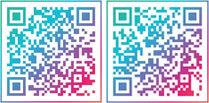Night landscape lighting technology and art
2021-09-15
author:
Views:
Guide:
Tourism landscape lighting is to use light to reshape the image of the tourist landscape at night, thus showing the unique charm of the tourist attraction at night. , to expand the time and space of tourists' nighttime activities, beautify the scenic spot, and provide a safe, comfortable and beautiful lighting environment for people's nightlife. Today, the editor will share with you several technical methods and artistic expressions of night scene lighting. Welcome to read.
◎ Source of this article: Hemei Cultural Tourism (www.ihmee.com)
1 Floodlighting technology
Floodlighting design is a common lighting design method in the night scene lighting design of tourist landscapes. In order to reflect the appearance and characteristics of important nodes of tourist attractions, combined with the volume of the tourist landscape and the landscape design effect that the designer needs to express at first, the design light source and The projection distance between the tourist landscape carriers is to install the floodlights corresponding to the landscape at the best viewing angle position to project multi-colored lights onto the landscape carriers.
Therefore, this lighting design is also called facade lighting design or flood lighting design. For tourist landscape night scene lighting, floodlighting can not only show the whole picture of the landscape carrier, but also effectively depict the irradiated landscape carrier. Three-dimensional effect, appearance shape, finish color, decorative details, etc.
undefinedundefined
The effect of floodlighting is directly affected by the material to be illuminated. Generally, the scenery displayed in combination with floodlighting includes landscape structures, landscape sketches, landscape stones, water features and buildings attached to the landscape.
Use flood lighting to illuminate all the features of the facade surface of the scene, and obtain a bright facade, so that you can clearly see the various details of the scene displayed on this luminous facade, like the detailed structure of the landscape carrier, Features such as facade material and decorative details.
These features can increase the interest and readability of the scenery, allowing visitors to gain a sense of visual vividness in the process of viewing the scenery at close range. When describing the surface features of the scene, the rhythm and rhythm created by the light and shade, virtual reality, shadow and color changes should be used reasonably according to the surface characteristics of the scene, so as to separate them from the two-dimensional plane, highlight the key points, and show the three-dimensionality of the scene. Sense and form beauty.
2 Internal light transmission lighting technology
The interior light-transmitting lighting design is mainly a lighting technology method projected from the inside out. It is usually combined with tourist landscape architecture, which not only meets the indoor lighting function, but also echoes the external nighttime landscape through transparent materials and enhances the visual impact.
The interior light-transmitting lighting design reflects the visual continuity of the interior and exterior spaces of the tourist landscape, requiring buildings to have planes and facades laid with transparent materials.
There are two ways of expressing the internal light transmission lighting technology
① Completely rely on the transmitted light in the room.
② In the colonnade, balcony, glass curtain wall and other places where the night scene effect needs to be emphasized in the building, special internal light-transmitting lighting equipment is set up, so as to form a light-transmitting luminous body or luminous surface.
3 Contour Lighting Technology
The application of contour lighting technology is to express the overall shape, outline and volume of tourism landscape architecture. Landscape lights are usually connected in series around the landscape architecture or other special parts to form light strips. The common light sources at present are neon lights, incandescent lights, LEDs, etc. These light sources It is very suitable for expressing traditional tourism landscape architecture.
The focus of contour lighting technology is to strengthen the landscape shape of tourist landscape architecture, and it is still relatively weak in lighting function. It is usually designed in combination with other lighting technology methods with strong lighting functions.
4 Accent Lighting Techniques
Accent lighting technology is a lighting technique that highlights a certain part of the scene in order to highlight the beauty of the scene. As LED light sources are widely used in tourism landscape lighting, this lighting method can be more used in real scene lighting. Different from traditional light sources, LED's advantages of light weight, small size and high luminous efficiency have been fully demonstrated in accent lighting. For example, in flower lighting, 1W and 3W white LEDs can be used to focus on the unique parts of the scene.
Relevant news
- Online Service
Customer service hotline
Customer service hotline
Pay attention to us
official account

WeChat official account
- Back to top







